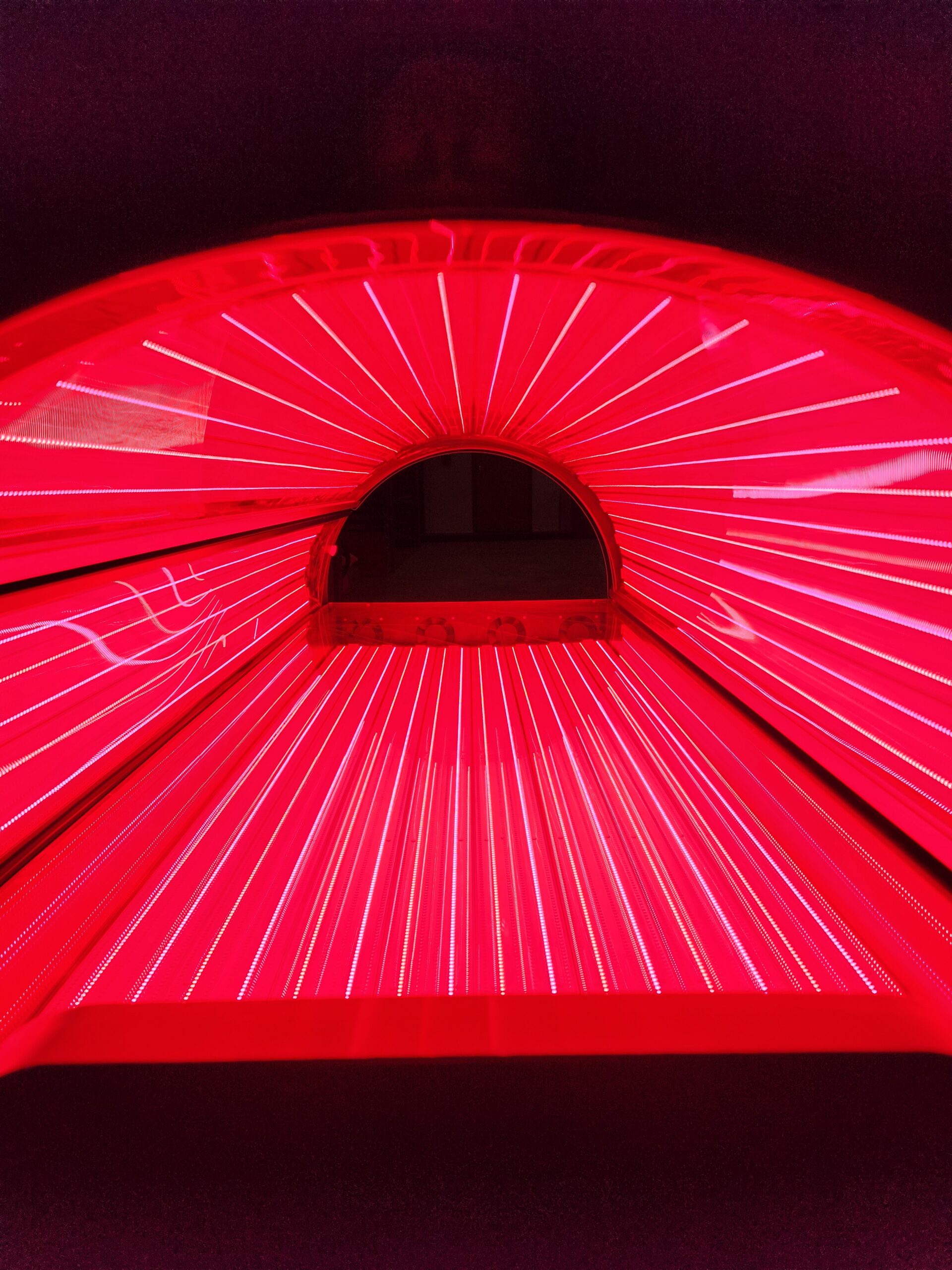Did you know that Red Light Therapy is clinically proven to help those who suffer from depression and anxiety?
In the ever-evolving world of health and wellness, certain innovations capture our attention more than others. Among these, Red Light Therapy, also known as Photobiomodulation, has emerged as a topic of particular interest. While the therapeutic potential of this approach spans across various conditions, from wound healing to skin rejuvenation, recent insights have illuminated its possible advantages for those grappling with depression and anxiety. Delving into the science behind it, one discovers intricate physiological mechanisms that harmonize the body’s intricate biological networks.
From the stimulation of cellular mitochondria to the activation of specific neurological pathways, red light therapy offers a fascinating glimpse into the body’s innate ability to heal and recalibrate. As we explore its potential for mental well-being, we’ll navigate through the scientific intricacies, ensuring a thorough understanding of this beneficial therapy.
What is Red Light Therapy?
Red Light Therapy, more scientifically known as Photobiomodulation, is a groundbreaking approach that harnesses the power of specific wavelengths of light to instigate beneficial physiological changes within the body. Unlike UV rays, which can be harmful, Red Light Therapy employs wavelengths in the red and near-infrared spectrum.
Technically, these specific wavelengths range between 600 to 1200 nanometers, allowing them to penetrate the skin’s surface without causing damage. Once absorbed, this light interacts with our biological systems in a way that catalyzes therapeutic outcomes.
The science of Red Light Therapy revolves around its ability to stimulate cellular activity, particularly within the mitochondria, often referred to as the cell’s “powerhouses” due to their role in energy production. When exposed to these specific light wavelengths, mitochondria amplify their production of adenosine triphosphate (ATP). This molecule is essentially the primary energy currency for cells, facilitating a host of cellular processes that are crucial for health and homeostasis.
The influence of Red Light Therapy isn’t limited to cellular energy alone. At a molecular level, it fosters the release of nitric oxide, enhancing blood flow and ensuring that cells receive optimal nutrients and oxygen for their function. This action is pivotal in tissue repair, inflammation reduction, and overall cellular vitality.
In essence, Red Light Therapy represents a fusion of physics and biology, utilizing light as a medium to boost the body’s inherent healing and regenerative processes. It’s this union of science and nature that positions Photobiomodulation as a promising avenue for addressing a myriad of health concerns, including skin issues, pain management, and more recently, mental health conditions like depression and anxiety.
How Does Red Light Therapy Work?
Red Light Therapy, at its core, utilizes specific wavelengths of red and near-infrared light to elicit various physiological responses within the body. These wavelengths penetrate the skin and underlying tissues, producing therapeutic effects that are backed by an array of biological, molecular, and neurological processes.
Biological Mechanism:
- Cellular Level: One of the primary ways red light therapy acts is by targeting our cellular powerhouses, the mitochondria. When mitochondria absorb the wavelengths from the red light, there’s a surge in the production of adenosine triphosphate (ATP), the primary energy currency of cells. This increase in ATP signifies enhanced cellular function and vitality, leading to various health benefits.
- Molecular Level: On a molecular scale, Red Light Therapy promotes the release of nitric oxide. Nitric oxide is a vasodilator, which means it aids in widening the blood vessels. This action improves blood flow, ensuring efficient oxygen and nutrient delivery to cells, supporting their health and function.
Neurological Mechanism:
When directed towards the brain, Red Light Therapy has been shown to activate the dorsal raphe nucleus, a region responsible for releasing serotonin. Serotonin, often termed the ‘feel-good’ neurotransmitter, plays a crucial role in mood regulation and overall feelings of well-being.
Additionally, inflammation in the brain has been linked to depressive symptoms. Red Light Therapy may help in reducing this neural inflammation, promoting a healthier and more balanced brain environment.
Systemic Effects:
Beyond the cellular and neurological benefits, Red Light Therapy also has systemic advantages. It enhances the body’s antioxidant systems, helping combat oxidative stress, a factor that, when unchecked, can lead to cellular damage and various health issues.
The improved blood flow, courtesy of nitric oxide release, not only nourishes cells but also supports cognitive function and overall brain health.
Understanding these mechanisms gives us a clearer picture of how Red Light Therapy can potentially be a game-changer in the arena of mental health, especially for conditions like depression and anxiety. By harnessing the body’s innate physiological processes, this therapy offers a non-invasive way to support and restore mental well-being.

Clinical Research on Red Light Therapy for Depression and Anxiety
The realm of mental health has historically been characterized by a fervent quest for effective therapies, given the complexity and multi-faceted nature of conditions like depression and anxiety. One innovative approach that has gained traction in recent years is Red Light Therapy or Photobiomodulation. Several studies have embarked on exploring its potential for these mental health conditions, offering illuminating insights into its efficacy and underlying biological mechanisms.
A comprehensive systematic review titled, “Transcranial and systemic photobiomodulation for major depressive disorder: A systematic review of efficacy, tolerability and biological mechanisms” posits that “Preliminary evidence supports the potential of non-retinal PBM as a novel treatment for MDD.” [1] Such a statement underscores the viability of Red Light Therapy as an emerging therapeutic avenue for major depressive disorder (MDD).
Shifting the focus to generalized anxiety disorder (GAD), a pilot study titled “Transcranial Photobiomodulation with Near-Infrared Light for Generalized Anxiety Disorder: A Pilot Study” brought forward an optimistic perspective. The research suggests, “Based on our pilot study, t-PBM with NIR is a promising alternative treatment for GAD.” [2] Given that GAD affects a significant portion of the population, such results hint at the broad-reaching implications of this therapy.
Lastly, yet another study, “Transcranial Photobiomodulation for the Treatment of Major Depressive Disorder. The ELATED-2 Pilot Trial“, contributes to the growing body of evidence in support of Red Light Therapy. This research found that “t-PBM with NIR light demonstrated antidepressant properties with a medium to large effect size in patients with MDD.” [3] This speaks not only to the efficacy of the therapy but also its magnitude of impact.
Collectively, these studies provide a robust scientific foundation for the application of Red Light Therapy in the context of depression and anxiety. They highlight the therapy’s potential, the specificity of its effects based on wavelengths, and its promising role in transforming the landscape of mental health interventions.
Benefits of Using Red Light Therapy for Depression and Anxiety
Red Light Therapy, or Photobiomodulation, continues to gain ground as a notable option for those navigating the challenges of depression and anxiety. Its rise in popularity isn’t just due to its non-invasive nature, but also because of the profound physiological changes it can induce. Here, we delve into the multifaceted benefits of this therapy, tying them to the biological, scientific, and technical intricacies of its mechanism.
- Non-Invasive Nature: One of the primary advantages of Red Light Therapy is its non-invasive approach. Unlike certain medical interventions or procedures that might require incisions or injections, Photobiomodulation involves the simple exposure of the body or targeted area to specific light wavelengths. This means fewer risks and discomforts for the patient.
- Stimulation of Cellular Activity: At a cellular level, Red Light Therapy boosts mitochondrial activity, promoting the production of ATP (adenosine triphosphate). Elevated ATP levels signify heightened cellular energy, which is critical for various physiological functions. This heightened cellular function can play a role in counteracting the fatigue and lethargy often associated with depressive states.
- Enhanced Neurotransmitter Release: Neurologically, Red Light Therapy’s capacity to stimulate regions like the dorsal raphe nucleus translates to increased serotonin release. Serotonin is a key neurotransmitter in mood regulation, and an imbalance in its levels can be associated with depression.
- Reduction in Neural Inflammation: Chronic inflammation in the brain has been correlated with depressive symptoms. By reducing neural inflammation, red light therapy can potentially alleviate some of the root causes of depression, paving the way for improved mood and cognitive function.
- Systemic Benefits: On a broader scale, the therapy’s ability to combat oxidative stress by enhancing the body’s antioxidant systems provides systemic benefits. By maintaining cellular integrity and function, the body is better equipped to handle external stressors, potentially reducing anxiety triggers.
- Flexibility and Convenience: The development of at-home Red Light Therapy devices means that individuals can administer their sessions at times that suit them best. This flexibility can be especially beneficial for those with anxiety, providing a sense of control and autonomy over their therapy.
- Complementary to Other Therapies: Red Light Therapy doesn’t necessarily need to stand alone. It can be integrated alongside other therapeutic modalities, whether they are pharmacological or psychological. This multifaceted approach can optimize outcomes for individuals seeking comprehensive solutions.
In essence, Red Light Therapy not only offers a scientific and biologically grounded approach to addressing depression and anxiety but also presents a holistic, patient-friendly option. Its synergy of cellular, neurological, and systemic benefits marks it as a promising frontier in the world of mental health interventions.

The Promising Horizon of Red Light Therapy for Mental Wellness
As we journey through the maze of available therapeutic options for depression and anxiety, it becomes imperative to embrace methods grounded in rigorous scientific and biological foundations. Red Light Therapy, with its origins in Photobiomodulation, stands tall as a testament to this union of science and therapeutic application.
From the cellular revitalization through ATP production in the mitochondria to the nuanced neurological benefits like enhanced serotonin release and reduced neural inflammation, this therapy offers a comprehensive approach to mental wellness. Each wavelength, meticulously calibrated, seeks to harmonize with our body’s inherent biological rhythms and processes, promoting healing and balance from within.
What makes red light therapy especially compelling is its dual nature: while deeply technical and scientific in its workings, it remains non-invasive, flexible, and patient-centric in its application. As a result, individuals are not just passive recipients but active participants in their healing journey.
In the evolving landscape of mental health interventions, it’s crucial to stay abreast of therapies that are both innovative and grounded in science. Red Light Therapy offers a beacon of hope in this respect, shining its therapeutic light on the intricate pathways of our physiology. As research continues and our understanding deepens, it’s conceivable that we’re on the brink of a new era in mental health treatment, where light, biology, and well-being converge harmoniously.
[1] Caldieraro MA, Cassano P. Transcranial and systemic photobiomodulation for major depressive disorder: A systematic review of efficacy, tolerability and biological mechanisms. J Affect Disord. 2019 Jan 15;243:262-273. doi: 10.1016/j.jad.2018.09.048. Epub 2018 Sep 17. PMID: 30248638.
[2] Maiello M, Losiewicz OM, Bui E, Spera V, Hamblin MR, Marques L, Cassano P. Transcranial Photobiomodulation with Near-Infrared Light for Generalized Anxiety Disorder: A Pilot Study. Photobiomodul Photomed Laser Surg. 2019 Oct;37(10):644-650. doi: 10.1089/photob.2019.4677. PMID: 31647775; PMCID: PMC6818480.
[3] Cassano P, Petrie SR, Mischoulon D, Cusin C, Katnani H, Yeung A, De Taboada L, Archibald A, Bui E, Baer L, Chang T, Chen J, Pedrelli P, Fisher L, Farabaugh A, Hamblin MR, Alpert JE, Fava M, Iosifescu DV. Transcranial Photobiomodulation for the Treatment of Major Depressive Disorder. The ELATED-2 Pilot Trial. Photomed Laser Surg. 2018 Dec;36(12):634-646. doi: 10.1089/pho.2018.4490. Epub 2018 Oct 20. PMID: 30346890; PMCID: PMC7864111.

